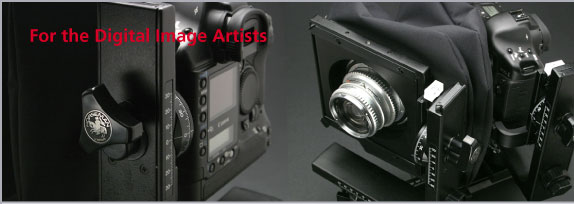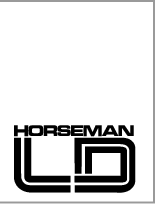|
 |
 |
|
 |
 |
 |
 |
|
* Large-format camera lenses (with focal lengths of 90mm and up)
* Interchangeable lenses with Hasselblad V-system mounts
* Mamiya 645/67*1 lenses
* Asahi Pentax 645/67 lenses |
 |
 |
|
 |
|
# Each type requires a special lens adaptor (not included).
*1 With a Mamiya 67 lens, the aperture lever must be fixed in place. |
 |
 |
 |
 |
|
 |
 |
 |
|
As the camera is fixed to a revolving mount, you can easily switch between landscape and portrait positions with a single turn of a knob. |
 |
 |
|
 |
 |
 |
 |
|
 |
 |
 |
 |
|
Bellows adjustments are possible at the front and rear. Swing and center tilt can cover a full 360 degrees*2 (at the image center). Maximum rise and fall are 30mm in either direction, and shift also comprises up to 30mm either way. By combining rise, fall and shift, images can be "stitched" together for novel effects. As bellows movements are performed by an ultra-precise rack-and-pinion drive, inaccuracies between successive pictures are held to an absolute minimum, making post-editing an easy task. |
 |
|
 |
 |
|
# While applying rear tilt, vertical "stitching" is not possible with normal rise-fall adjustments.
# "Stitching" is also limited by the diameter of the lens image circle and by vignetting due to the camera's lens mount.
*2 Limited by maximum bellows extension |
 |
 |
 |
|
 |
 |
 |
 |
|
Especially in close-up photography, you will find the possibility of re-focusing without using the bellows very attractive. The camera base is mounted on monorail on which it can be moved back and forth by a rack-and-pinion drive. Without moving the tripod, and without in any way changing the bellows extension, the entire camera can be slid along this monorail for re-focusing. |
 |
 |
 |
 |
 |
|
 |
 |
 |
 |
|
Photos A and B illustrate this effect. Assuming that the tilt axis in photo A moved out of the image plane, the frame and focus would be become blurred as in photo B, requiring re-framing and re-focusing. In the Horseman design, on the other hand, the remains coincident with the image plane, eliminating any need to re-frame or re-focus. |
 |
|
 |
 |
 |
 |
|
 |
 |
 |
 |
|
There are times, however, when it is practical to be able to move the tilt axis; for example, when the point to be focused upon is not at the center of the object. In such cases, the tilt axis can be moved up or down the image plane with the help of an accurate adjustment scale. |
 |
 |
 |
 |
 |
 |
|
 |
 |
|
With the new slide adaptor(23602) , the Horseman LD can be used in combination with high end professional digital camera backs. |
|
 |
 |
|
 |
 |
 |
 |
 |
|
 |
 |
|
Horseman will also provide a conversion kit that will change the LD into a 4x5 inch film camera. This kit will comprise a main frame, connector frame, ground glass and bellows. By using an additional roll film holder, it will be possible to shoot in the following formats: 6x7, 6x9 or 6x12cm. |
|
 |
|





